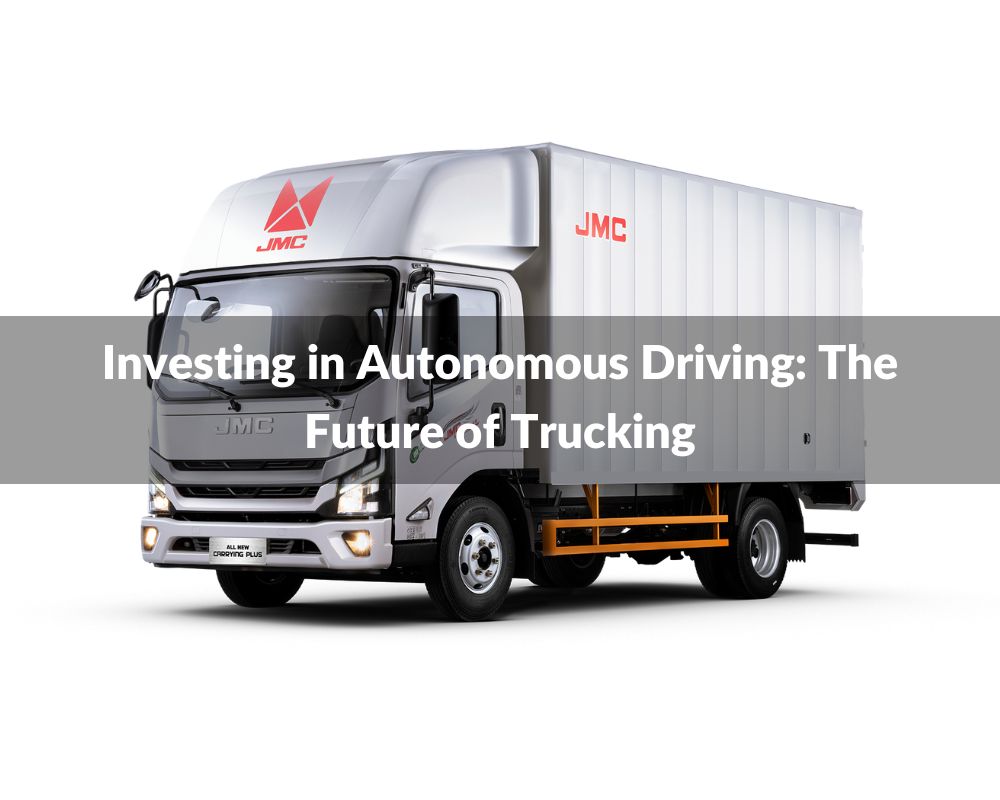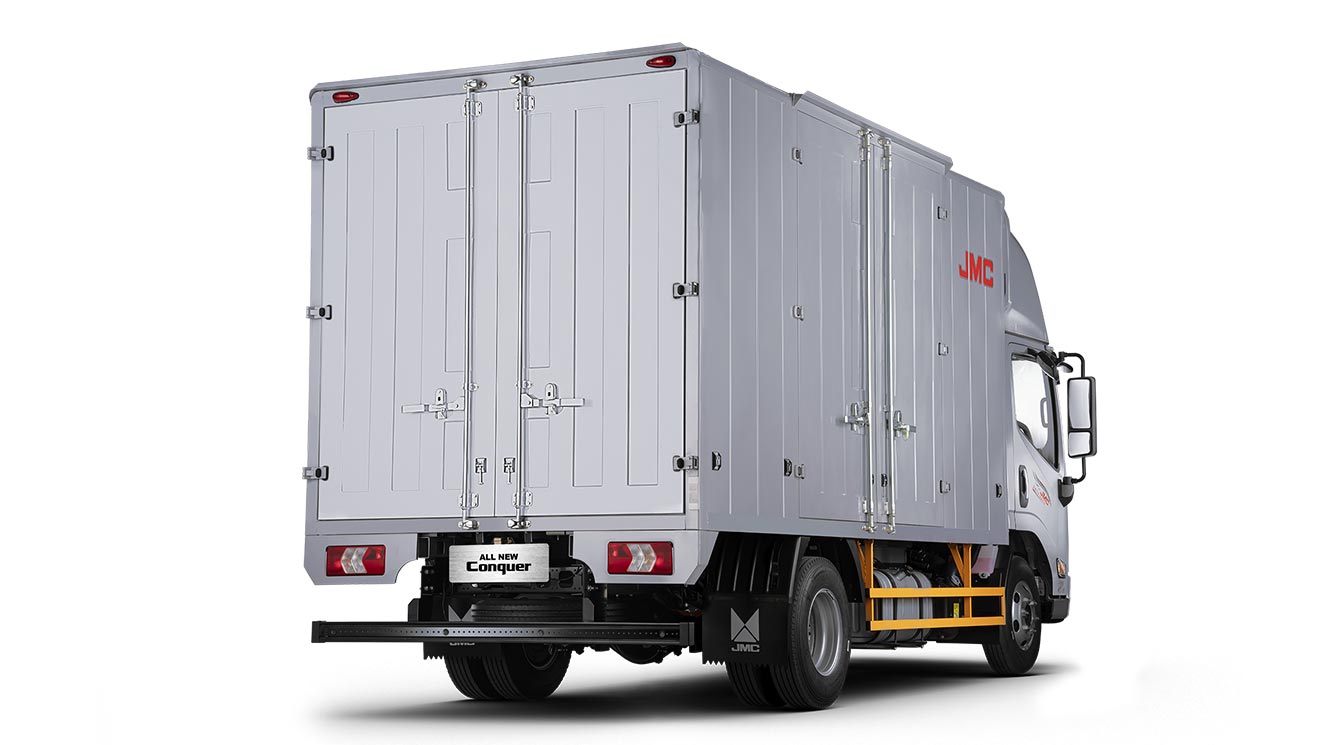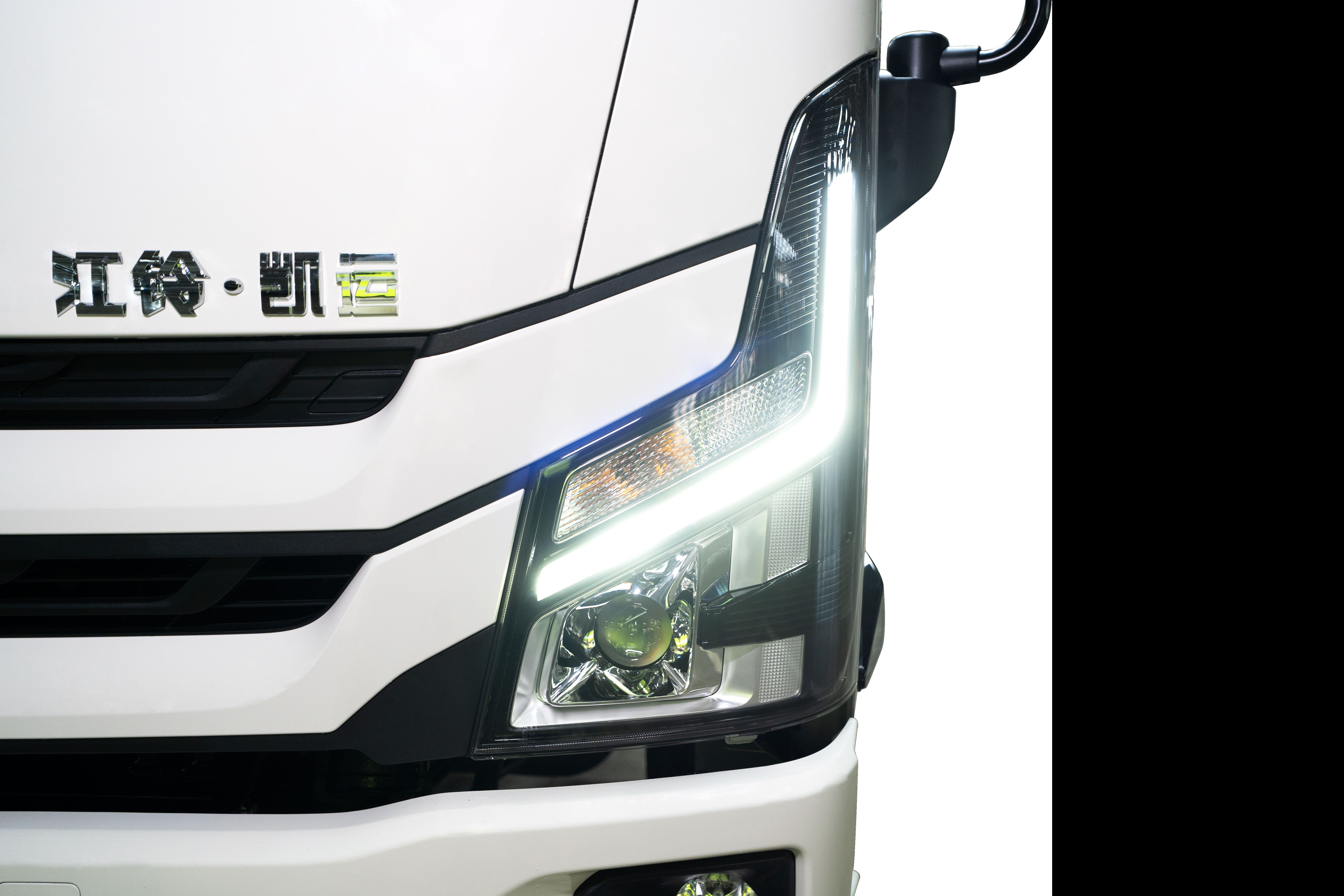Investing in Autonomous Driving: The Future of Trucking
- Categories:BLOGS
- Author:
- Time of issue:2023-07-13 17:13
- Views:0
(Summary description)Investing in self-driving trucks has become a compelling topic amid the rapid development of self-driving technology and the increasing challenges of the truck industry. With advances in artificial intelligence, sensor technology, and data analytics, self-driving trucks are gradually changing the way goods are transported and what the future looks like. This article explores the potential opportunities and challenges of investing in autonomous trucks to capture the future of the trucking industry.
Investing in Autonomous Driving: The Future of Trucking
(Summary description)Investing in self-driving trucks has become a compelling topic amid the rapid development of self-driving technology and the increasing challenges of the truck industry. With advances in artificial intelligence, sensor technology, and data analytics, self-driving trucks are gradually changing the way goods are transported and what the future looks like. This article explores the potential opportunities and challenges of investing in autonomous trucks to capture the future of the trucking industry.
- Categories:BLOGS
- Author:
- Time of issue:2023-07-13 17:13
- Views:0

The Rise of Self-Driving Technology
Investment Opportunities in the Truck Industry
Fundamentals of autonomous driving technology
Classification of Truck Automation Levels
Global Autonomous Truck Market Status
Estimated growth trend of the market size
Potential application areas for self-driving trucks
Reasons to invest in self-driving trucks
Challenges and risks of self-driving truck technology
Approaches and Strategies for Investing in Self-Driving Trucks
Prospects and Risk Assessment of Investing in Self-Driving Trucks
Summary and Recommendations for Investing in Self-Driving Trucks
The future of automation in the truck industry
Investing in self-driving trucks has become a compelling topic amid the rapid development of self-driving technology and the increasing challenges of the truck industry. With advances in artificial intelligence, sensor technology, and data analytics, self-driving trucks are gradually changing the way goods are transported and what the future looks like. This article explores the potential opportunities and challenges of investing in autonomous trucks to capture the future of the trucking industry.
The Rise of Self-Driving Technology
The rise of autonomous driving technology is an important trend in recent years. With the continuous advancement and innovation of science and technology, autonomous driving technology has been widely concerned and applied in various fields, including the truck industry. That's where self-driving trucks come in.
The rise of self-driving technology in the truck industry brings many potential benefits. First of all, it can improve transportation efficiency and accuracy, reduce the influence of human factors on driving operations, thereby reducing the risk of accidents and errors. Second, autonomous driving technology can improve driver safety and reduce driver fatigue and accidents caused by wrong operations. In addition, autonomous driving technology can also bring better environmental performance to the trucking industry, such as reducing fuel consumption and emissions by optimizing routes and speeds.
However, some problems cannot be avoided, one of which is the reliability and safety of the technology, especially in complex traffic environments and severe weather conditions. In addition, regulatory and legal constraints and public acceptance of autonomous driving technology are also factors to be considered. But as the technology continues to improve, self-driving trucks are expected to be more widely used in the future.

Investment Opportunities in the Truck Industry
Multiple investment opportunities exist in the truck industry, especially with the rise of autonomous driving technology. Investors can consider investing in areas such as autonomous driving technology providers, autonomous truck manufacturers, high-precision map and positioning technology companies, logistics and transportation technology companies, and charging infrastructure construction. However, investors should realize that investment opportunities in the truck industry also come with certain risks, so adequate market research and risk assessment are required.
Fundamentals of autonomous driving technology
Sensors: Autonomous vehicles use various sensors to perceive their surroundings. These sensors may include LiDAR, radar, cameras, ultrasonic sensors, and inertial measurement units (IMUs), among others. The data collected by the sensors provides information on the distance, shape and movement of objects around the vehicle.
Data processing and perception: By feeding sensor data into the processing system, autonomous vehicles can analyze and understand the surrounding environment. This involves using techniques such as computer vision, machine learning, and artificial intelligence to identify and classify roads, traffic signs, pedestrians, vehicles, and more.
Decision-making and planning: Based on the perception of the environment, autonomous vehicles need to make decisions and plan driving paths. This includes evaluating different driving options, judging priorities and handling complex traffic situations. The decision system generates a detailed driving path and associated actions.
Actuation and control: An autonomous vehicle utilizes an actuation and control system to actually steer the vehicle. This includes controlling the steering, accelerator, brakes and transmission, among other things. The execution and control system will adjust the vehicle's driving behavior according to the planned path and decision results.
Safety Monitoring and Troubleshooting: To ensure safety, an autonomous driving system needs to constantly monitor the state of the vehicle and the surrounding environment. If the system detects any malfunction or dangerous situation, it should be able to take appropriate action in time, such as stopping the vehicle or sounding an alarm.
Classification of Truck Automation Levels
Truck automation levels can be classified according to the international standard SAE J3016 (Society of Automotive Engineers). The following are common truck automation level classifications:
Level 0 (Level Zero Automation): This level refers to traditional trucks driven entirely by humans, with no automated assistance.
Level 1 (Level 1 Automation): This level includes certain automated assistance features such as Cruise Control and Lane Keeping Assist. These functions can partially relieve the burden on the driver, but the driver still needs to maintain control and monitoring of the vehicle.
Level 2 (Level 2 automation): This level defines partial automation functions such as automatic braking, automatic acceleration, and lane center keeping. The driver still needs to keep monitoring and intervening in the vehicle, but these functions can assist driving under certain conditions.
Level 3 (Level 3 automation): This level represents conditional automation, where the vehicle can drive autonomously under certain conditions, but requires the driver to take over control when needed. Drivers can engage in other activities while autonomous, but need to be prepared to take control.
Level 4 (Level 4 Automation): This level defines a high degree of automation where the vehicle is able to drive autonomously without driver intervention in most situations. However, this level still requires the driver to take over control in certain conditions or emergencies.
Level 5 (five levels of automation): This level represents complete automation without human intervention. The vehicle is able to drive autonomously in all situations without the driver being involved in the driving task.
Global Autonomous Truck Market Status
The global autonomous truck market is in a stage of rapid development with broad potential and prospects. The market size is constantly expanding, and many well-known automakers and technology companies are competing to participate in the market. The logistics and transportation industry is the main application area, but there are potential applications in other areas as well. Although the market is facing technical challenges and regulatory constraints, with the advancement of technology, the gradual improvement of regulations and the maturity of business models, self-driving trucks are expected to become an important driving force in the future and bring revolutionary changes to the transportation system.

Estimated growth trend of the market size
CAGR: According to market research reports and industry forecasts, the self-driving truck market is expected to maintain a double-digit or higher CAGR. This indicates that the market will continue to expand rapidly in the next few years.
Improvement of technology maturity: With the continuous maturity and development of self-driving technology, the commercial application of self-driving trucks will be further promoted. Improvements in technology will increase truck automation and performance, attracting more investment and market participation.
Supply chain and logistics efficiency improvement: The introduction of self-driving trucks will promote the efficiency improvement of supply chain and logistics. Automated trucking can provide more accurate and efficient cargo transportation services, reduce transportation costs, and optimize the speed of cargo distribution and delivery.
Demand Driven: The growth of the autonomous truck market will be driven by rising logistics demands and traffic congestion issues. To meet transportation and transportation challenges, self-driving trucks will be a solution, providing smarter, safer and more efficient transportation services.
Technology investment and partnerships: Many automakers, technology companies, and logistics players are actively investing in research and development and collaborations to advance the development and commercialization of autonomous truck technology. This increase in technological investment and partnerships will further drive the growth and size of the market.
Potential application areas for self-driving trucks
Logistics and Freight: Autonomous trucks have huge potential in the logistics and freight sector. They can improve transportation efficiency and accuracy, reduce operating costs, and address driver shortages. Self-driving trucks can transport goods over long distances on highways, providing faster, safer and more reliable delivery of goods through automated operations.
Ports and logistics centers: Self-driving trucks can be applied to cargo transportation and handling in ports and logistics centers. They can autonomously complete the loading, unloading and transportation tasks of goods, improve logistics efficiency, reduce the impact of human factors on operations, and reduce cargo accumulation and congestion.
Construction sites and mining: Self-driving trucks can be used in construction sites and mining industries for material transportation and heavy equipment handling. They improve job site safety and efficiency and reduce the risk of injury.
Agriculture and agricultural logistics: Self-driving trucks can be used in the agricultural sector for the transportation and logistics of agricultural products. They can reduce labor costs through automated operations, improve logistics efficiency, and ensure timely transportation and preservation of agricultural products.
Urban transportation and public services: Self-driving trucks could play an important role in urban transportation and public services. For example, they can be used in waste collection, public transport and urban delivery services, providing more efficient and environmentally friendly solutions.
Reasons to invest in self-driving trucks
It can improve transportation efficiency and reduce costs, solve manpower shortage and driver safety issues, have environmental protection and sustainability advantages, capture technological development and market potential, and achieve industry transformation and competitive advantages. However, investing in self-driving trucks also comes with certain risks and challenges, and investors need to conduct sufficient market research and risk assessment.
Challenges and risks of self-driving truck technology
Autonomous truck technology faces safety challenges, technical reliability issues, map and environmental data challenges, regulatory and legal constraints, and public acceptance and trust issues. Ensuring system security, improving technical reliability, improving map data and situational awareness, developing an appropriate regulatory framework, and actively communicating and building trust with the public are key to addressing these challenges. With further development and continuous efforts, self-driving truck technology will gradually overcome these challenges and achieve wider applications.

Self-driving truck maker
JMC: The company has made some progress in the field of self-driving technology and has launched commercial vehicles equipped with self-driving functions. These self-driving trucks can drive autonomously under certain conditions and have assisted driving functions. Jiangling Motors' development in the field of self-driving trucks shows their efforts in automotive innovation and technology research and development.
Waymo: Waymo is a subsidiary of Alphabet (Google's parent company) that focuses on developing self-driving technology and software. They are actively developing and testing autonomous trucks.
Tesla: Tesla is a well-known electric car manufacturer and also has some involvement in the field of autonomous driving. Their truck model, the Tesla Semi, also plans to incorporate self-driving technology.
Approaches and Strategies for Investing in Self-Driving Trucks
Invest in stocks of related companies: Consider investing in stocks of related companies such as self-driving truck technology providers, sensor manufacturers, companies developing self-driving systems, and automakers. This allows for a share in the fruits of the development of self-driving truck technology and the benefits of industry growth.
Investing in R&D and innovation: Investing in R&D and innovation in autonomous trucks is a long-term strategy. Consider investing in technology companies, start-ups and research institutions with expertise and forward-thinking in the research and development of self-driving truck technology.
Look for partnerships: You can look for partnerships with companies related to self-driving trucks. This could take the form of technical, commercial or investment cooperation. Cooperating with technology-leading companies or potential start-ups can share technological progress and market opportunities.
Focus on the policy and regulatory environment: The development of autonomous trucks is influenced by the policy and regulatory environment. Understanding and paying attention to relevant policies and regulations can help investors grasp market trends and opportunities, and adjust investment strategies in a timely manner.
Risk management and diversification: Investing in self-driving trucks requires attention to risk management. The technology and market in this field have certain uncertainties and risks. Investors can manage risk by diversifying their portfolio, controlling investment risk and performing adequate due diligence.
Prospects and Risk Assessment of Investing in Self-Driving Trucks
prospect:
Growth in market demand: As logistics and freight demand grow, self-driving trucks are expected to become an important solution to meet transportation needs. This will bring potential growth opportunities for the autonomous truck market.
Technological progress and maturity: Autonomous driving technology is constantly developing and maturing, and the sensors, artificial intelligence and algorithms involved are constantly improving. As the technology matures, the performance and reliability of autonomous trucks will be enhanced, further driving the market.
Reduce operating costs and increase efficiency: Autonomous trucks have the potential to reduce operating costs, reduce manpower requirements, and improve transportation efficiency and accuracy. This will attract logistics and transportation companies to adopt self-driving trucks, thereby driving the market demand growth.
risk assessment:
Technical challenges and uncertainties: Autonomous truck technology still faces some technical challenges, such as safety, reliability, and operation in complex environments. Uncertainty in technology may lead to extended development and commercialization time, and investors need to consider the risks of technological progress.
Regulations and legal restrictions: The development of self-driving trucks is restricted by regulations and laws in different countries and regions. Uncertainty in regulations and changes in the regulatory environment may adversely affect the market development. Investors need to pay attention to relevant regulations to avoid legal risks.
Competition and market presence: The autonomous truck market is highly competitive, with major automakers and technology companies actively participating. Investors need to assess competitors' technological strength, market share and business strategies, and how they differentiate themselves from competitors.
Public acceptance and social acceptance: Autonomous driving technology involves issues of public acceptance and social acceptance. The public has mixed views on the safety and privacy of self-driving vehicles. This may lead to limited market acceptance, affecting the commercialization and promotion of autonomous trucks.
Advice for investing in self-driving trucks
The key to investing in autonomous trucks is to study industry and technology developments in depth, diversify your investments, and take a long-term investment perspective. Investors should focus on technological innovation and competitive advantages, while managing risks and flexibly adjusting investment strategies. Cooperating with professional advisors, keeping an eye on industry trends, and maintaining patience and long-term planning can help you make informed investment decisions.

The future of automation in the truck industry
Commercial application of self-driving trucks: With the further development and maturity of self-driving technology, it is expected that self-driving trucks will gradually achieve commercial application. Self-driving trucks could improve transport efficiency, reduce costs, address driver shortages, and improve road safety.
Automated logistics and freight networks: The emergence of self-driving trucks will drive the automation of logistics and freight networks. Through automated operation and intelligent logistics management system, accurate tracking of goods, optimization of transportation routes and delivery efficiency can be achieved, thereby improving the efficiency of the entire logistics supply chain.
Cooperative driving of truck fleets: The development of autonomous trucks holds promise for collaborative driving of fleets. The intelligent coordination and communication of the fleet can be realized among multiple self-driving trucks, forming an effective fleet driving mode and improving transportation efficiency and safety.
Automated warehousing and material handling: Self-driving truck technology can also be applied to warehousing and material handling. Self-driving trucks can move and sort goods inside the warehouse, improving the efficiency and accuracy of warehousing operations.
Data-driven optimization of operations: As self-driving trucks become more prevalent, vast amounts of data will be collected and analyzed. This data can be used for operational optimization, such as forecasting demand, optimizing route planning and fleet scheduling, thereby improving transportation efficiency and reducing costs.
Conclusion:
Whether you are a venture capitalist, an entrepreneur, or a reader interested in industry developments, understanding the investment landscape and industry trends for autonomous trucks will provide you with important insights and decision support. By investing in self-driving trucks, we can increase transportation efficiency, reduce costs, address labor shortages, and move the industry toward a more sustainable and intelligent future.
Read More:
List of the 15 Best China Bus Brands 2023
TOP 9 China Electric Pickup Brands
Scan the QR code to read on your phone
Relevant Information




MESSAGE
WRITE A MESSAGE TO US
Copyright: Jiangling Motors Corporation Group GAN ICP 17001991-1 www.300.cn
Copyright: Jiangling Motors Corporation Group






